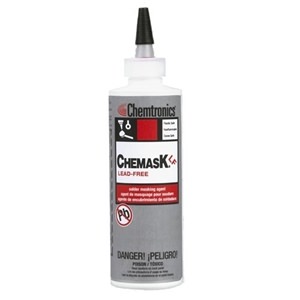
Your Sample Request
Chemask LF - Lead-Free Solder Mask
*=required field
TDS
REGS
SDS
Chemask LF - Lead-Free Solder Mask
High temperature, peelable temporary mask ideal for lead-free applications
Chemask® Lead-Free Solder Masking Agent is a temporary, fast curing, peelable solder masking agent formulated for use in high-temperature lead-free applications. It is a temperature resistant coating that protects component-free areas of the PCB during wave soldering. Chemask® Lead-Free can be introduced into the preheat oven within 4 minutes of application without adverse effects. Use to protect pins, posts, contacts and edge connections during conformal coating processes.
Features & Benefits
- Formulated for use with lead-free applications
- Can also be used with Tin/Lead solders
- Usable within five minutes of application with preheat cycles
- Provides short-term high temperature protection up to 550ºF (288ºC)
- RoHS compliant
Applications
- Ideal for protecting contacts during lead-free soldering
| TDS | |
| REGS | |
| SDS | |
| Categories |
| Specifications | MIL-STD-2000A, PARA.5.3.18 |
|---|---|
| Shelf Life | 2 yrs |


